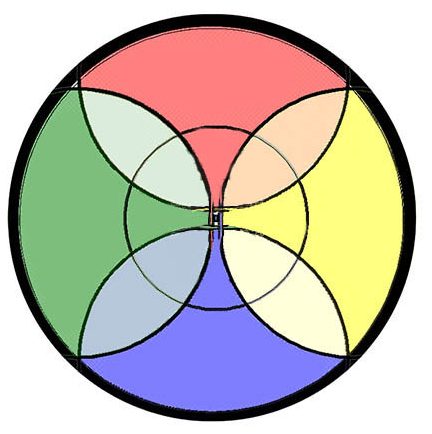Prayer ribbons

Writing down prayers can help a person concentrate on the prayer and avoid being distracted. It can also help a person think through issues that they are praying about and express them in a more focussed way than in an improvised prayer. Writing prayer down on strips of cloth or ribbons can add an extra dimension of symbolism to written prayer.
The persistence of Clootie trees in Scottish culture, and use of similar activities around the world, demonstrate the way in which this sort of activity can resonate with people.
Advantages
When a prayer is written on a ribbon, the ribbon can become a symbol of that prayer. This symbol can then be used in a number of ways (see below) to emphasise unseen aspects of the nature of prayers. Examples of this are when a group is praying together, and each person contributes a ribbon. These ribbons could be woven together to form a table covering or banner. The ribbon will also outlast the initial moment and so can serve as a reminder of the prayer or a reminder to continue to pray. This can help emphasise that some forms of prayer are a process which we engage with that can last months or years.

The ribbon can provide a lasting visual focus for a prayer. The symbol of the prayer can be seen publicly, whilst still affording individuals privacy about the content of their prayer. Each ribbon can be a personal act, and ribbons can also be combined in a communal act. Ribbons can be tied to things like trees and fences, so are especially suitable for outdoor use rather than other options like post-it notes.
Over the last few years it has become increasingly popular for people to leave flowers, notes and other memorials at scenes of tragic events. This prayer activity, therefore, could be a particularly appropriate way of helping people to make a connection between their Christian life and a community response to an incident.
Disadvantages:
Care needs to be taken in the planning stage about what will happen to the ribbons in the long term. Will they become litter? A public nuisance? If ribbons are found dumped in a rubbish bin by the event leaders, what will that communicate to participants about what the leaders think of their prayers? This is also an example of a wider need to re-examine our use of resources as good stewards of creation – and participants within a global environment where people are vulnerable to climate change induced by activity geographically distant from them.
Variations:
At an all-age, whole-town, ecumenical Pentecost event, we encouraged people to paint their prayer on ribbons. At the same event we constructed a tepee within which people were continually praying, and offering prayer for healing. Next to the tepee, we set up the poles for another tepee, but left them uncovered. The prayer ribbons were hoisted on halyards throughout the event, so that they became a visual symbol of the activity taking place in the other tepee as they blew in the wind.

